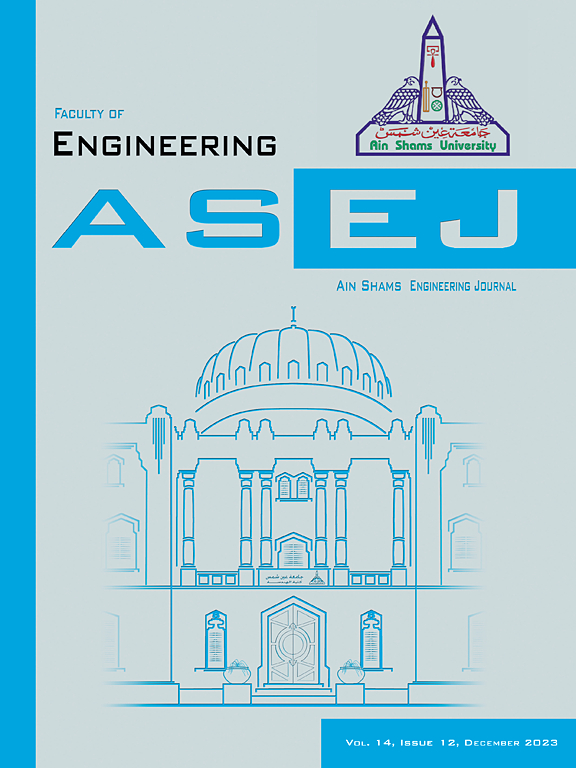Numerical and experimental analysis of thermal transfer for radial-shaped holed fins
IF 5.9
2区 工程技术
Q1 ENGINEERING, MULTIDISCIPLINARY
引用次数: 0
Abstract
This study investigates heat characteristics transferred from a rectangular perforated fins, which are widely used in engineering applications for thermal management. The research focuses on the radial shaped perforation geometry effects on the fins thermal performance. Perforation is introduced to reduce the weight of the fins and improve thermal dispersion by increasing the ratio of exposed area to volume and promoting better airflow. A combination of experimental testing and CFD simulations is employed to examine parameters such as Nusselt number, overall thermal efficiency, and effectiveness. The results indicate that strategically placed perforations significantly improve heat transfer performance while reducing material usage by 16% of area. The experimental data closely matched the numerical results with an error of 3.99%. It has been found that the radial fin perforation had achieved a significant overall efficiency and effectiveness enhancement. Present work provides insights into optimizing perforation patterns for various applications, offering an effective solution for lightweight and high-performance heat transfer systems in automotive, aerospace, and electronic cooling industries.
径向孔翅片传热的数值与实验分析
本文研究了在工程热管理中广泛应用的矩形穿孔翅片的传热特性。研究了径向射孔几何形状对翅片热性能的影响。穿孔的引入是为了减轻翅片的重量,并通过增加暴露面积与体积的比例和促进更好的气流来改善热分散。采用实验测试和CFD模拟相结合的方法对Nusselt数、总热效率和效能等参数进行了检验。结果表明,布局合理的穿孔显著提高了传热性能,同时减少了16%的材料使用面积。实验数据与数值结果吻合较好,误差为3.99%。研究发现,径向翅片穿孔取得了显著的整体效率和效益的提高。目前的工作为优化各种应用的穿孔模式提供了见解,为汽车、航空航天和电子冷却行业的轻质高性能传热系统提供了有效的解决方案。
本文章由计算机程序翻译,如有差异,请以英文原文为准。
求助全文
约1分钟内获得全文
求助全文
来源期刊

Ain Shams Engineering Journal
Engineering-General Engineering
CiteScore
10.80
自引率
13.30%
发文量
441
审稿时长
49 weeks
期刊介绍:
in Shams Engineering Journal is an international journal devoted to publication of peer reviewed original high-quality research papers and review papers in both traditional topics and those of emerging science and technology. Areas of both theoretical and fundamental interest as well as those concerning industrial applications, emerging instrumental techniques and those which have some practical application to an aspect of human endeavor, such as the preservation of the environment, health, waste disposal are welcome. The overall focus is on original and rigorous scientific research results which have generic significance.
Ain Shams Engineering Journal focuses upon aspects of mechanical engineering, electrical engineering, civil engineering, chemical engineering, petroleum engineering, environmental engineering, architectural and urban planning engineering. Papers in which knowledge from other disciplines is integrated with engineering are especially welcome like nanotechnology, material sciences, and computational methods as well as applied basic sciences: engineering mathematics, physics and chemistry.
 求助内容:
求助内容: 应助结果提醒方式:
应助结果提醒方式:


